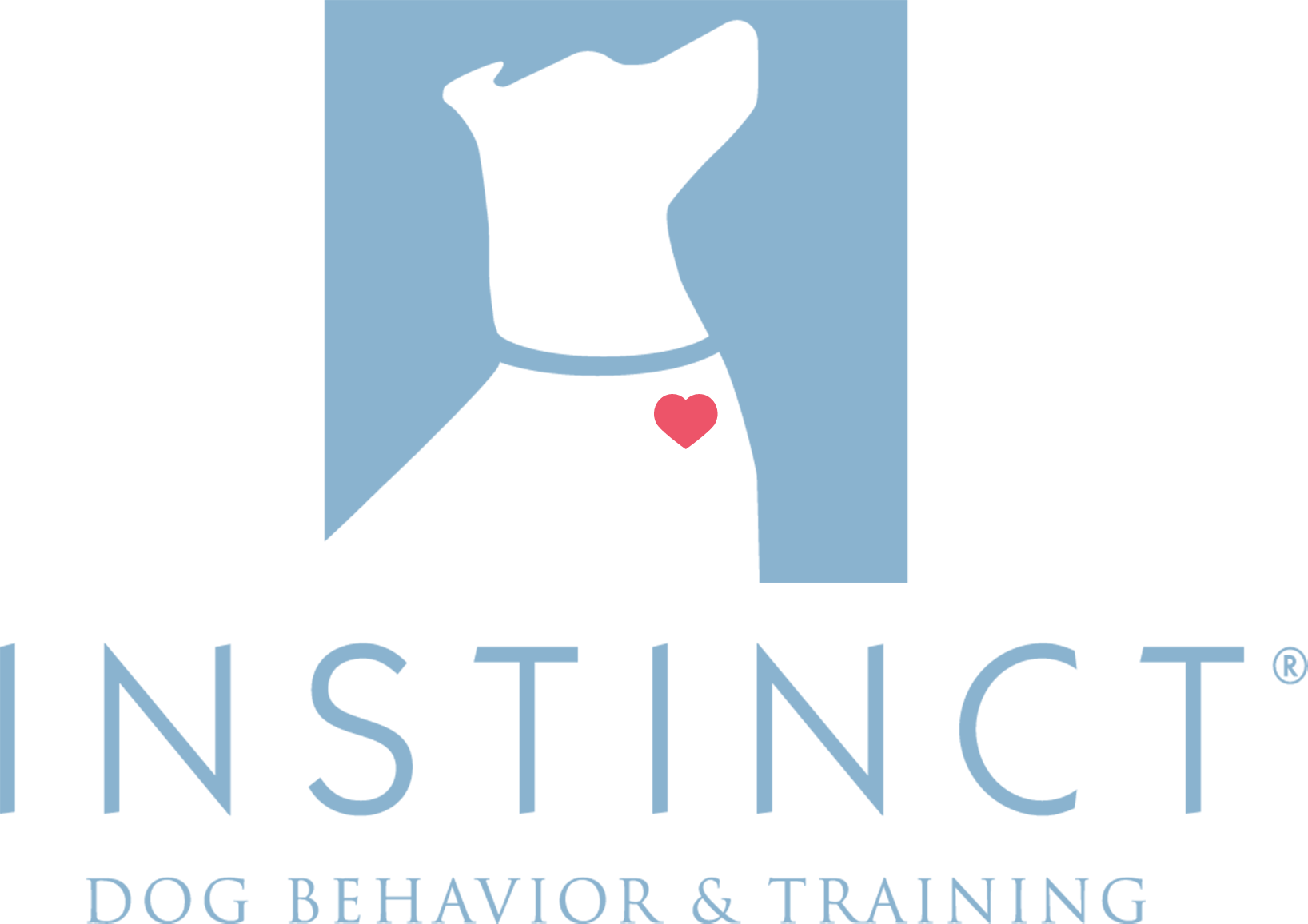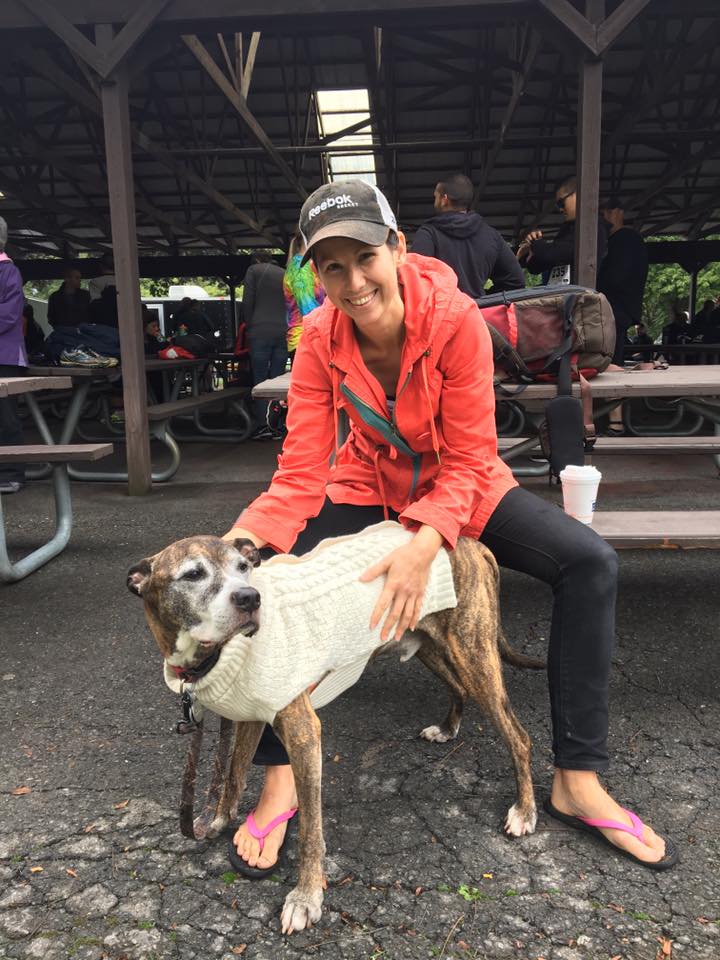
Welcome to the blog!
This week, we’re exploring one of dog training’s most popular maxims: “Only Say It Once.” It’s one of the longest standing and most widely accepted pieces of advice out there. But is it true?
Read on for my thoughts on the “Say It Once” mentality, then weigh in with your own reactions here.

Repeating Cues: Helpful or Harmful?
If you’ve ever taken a dog training class, or searched for dog training advice online, you’ve likely come across the rule to, “Only Say It Once” when it comes to giving cues like Sit and Down. But is repeating cues during training always a no-no?
Like most things in dog training (and in life), the answer is, “It depends.”
The Rationale Behind “Only Say It Once”
Before we dive into the nuances around if and when cue repetition is harmful, let’s take a closer look at the generally accepted rationale for the “Only Say It Once” adage.
A quick internet search of the phrase yields dozens of results from various dog training sources that all go something like this:
“If you repeat yourself during training, you will teach your dog to ignore you the first time you ask. You’ll be setting yourself up for a disobedient dog who doesn’t take your instructions seriously. And, your dog will be left feeling confused and uncertain about your expectations.”
A Different Era of Dog Training
When examining this rationale, it’s helpful to consider that the advice to never repeat cues first arose at a time when the default method of dog training was focused primarily on obedience and compliance.
Dogs were taught and given commands (non-optional orders), then expected to comply. And while they may have received verbal praise for a desired response, the general system of motivation was that of avoidance: if the dog didn’t respond to a command the first time they were asked, they were generally issued some form of unpleasant consequence – a collar correction, a verbal reprimand, etc.
So, the original maxim to “Say It Once” was really an abbreviated version of “Say It Once, then Make It Happen.”
The original maxim to “Say It Once” was really an abbreviated version of “Say It Once, then Make It Happen.”
Within this compliance-focused training framework—where people still loved their dogs very much, but where the ideology and approach were just very different—the advice to “Only Say it Once” made sense. After all:
- An animal whose responses are being motivated by avoidance is likely to respond at just the level needed to avoid the negative consequence. In this paradigm, if a dog knew their owner always gave a cue at least twice before issuing a correction for non-responsiveness, the dog would (usually) wait until after the second cue to respond.
- A dog who was receiving corrections for failure to comply to cues would be left feeling anxious and uncertain about what to expect if they sometimes got corrected after the first cue, and other times, not until after the second or third.
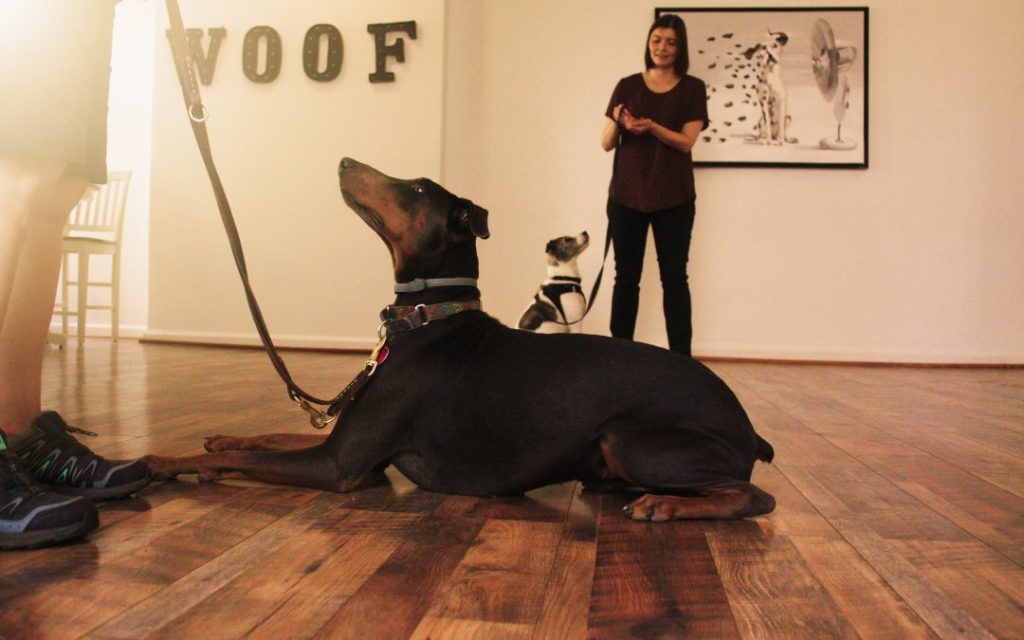
Does “Only Say It Once” Have a Place in Positive Dog Training?
Our training methods and ideologies have evolved to be more cooperative and to focus more on increasing our dogs’ responsiveness to cues through positive motivation.
Given these changes, does “Only Say It Once” still have a place in today’s modern training landscape—or should we say goodbye to “Say It Once,” once and for all?
“Say It Once…But Sometimes, Say It More than Once”
While our methods have changed, this old adage still holds true…some of the time.
Below, we outline a few of the most common situations in which repeating your cues (saying it more than once) is likely to have a negative impact on your training and on your relationship with your dog.
Then, we highlight those times when it’s generally neutral—or even helpful—to “Say It More than Once.”
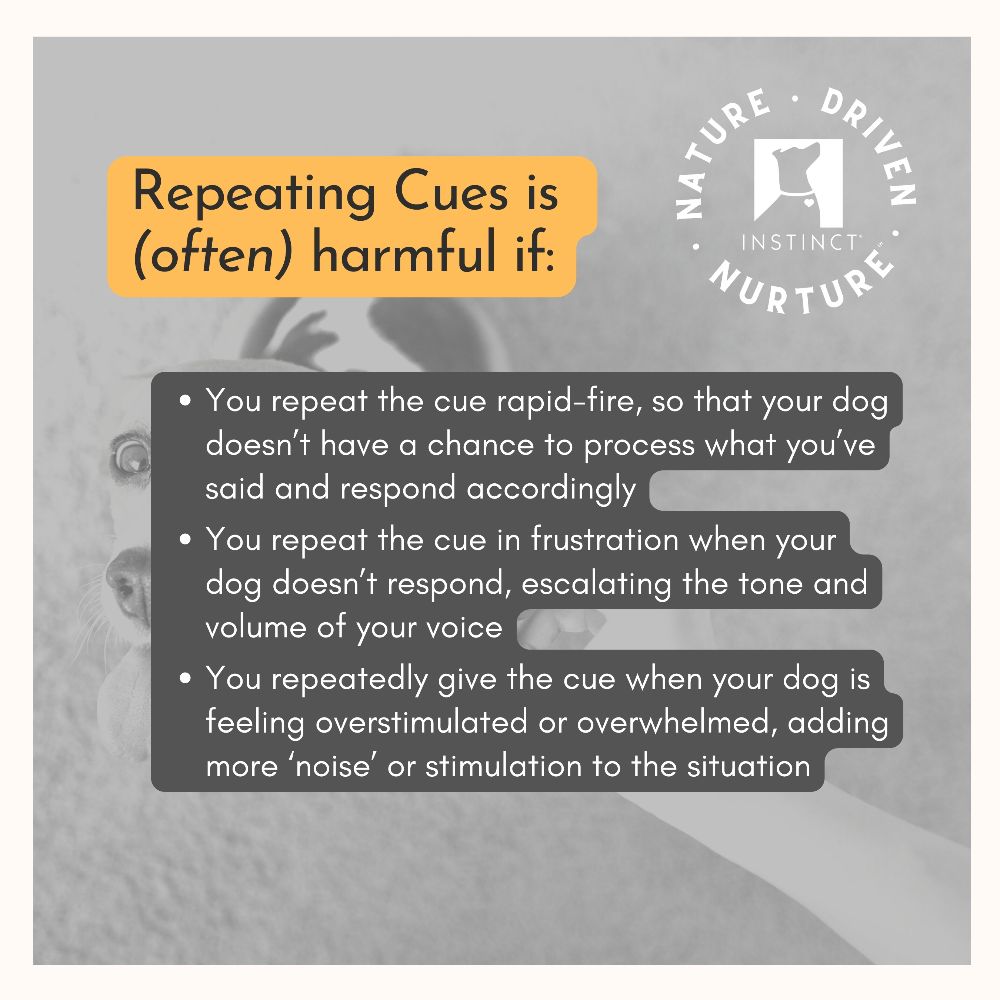
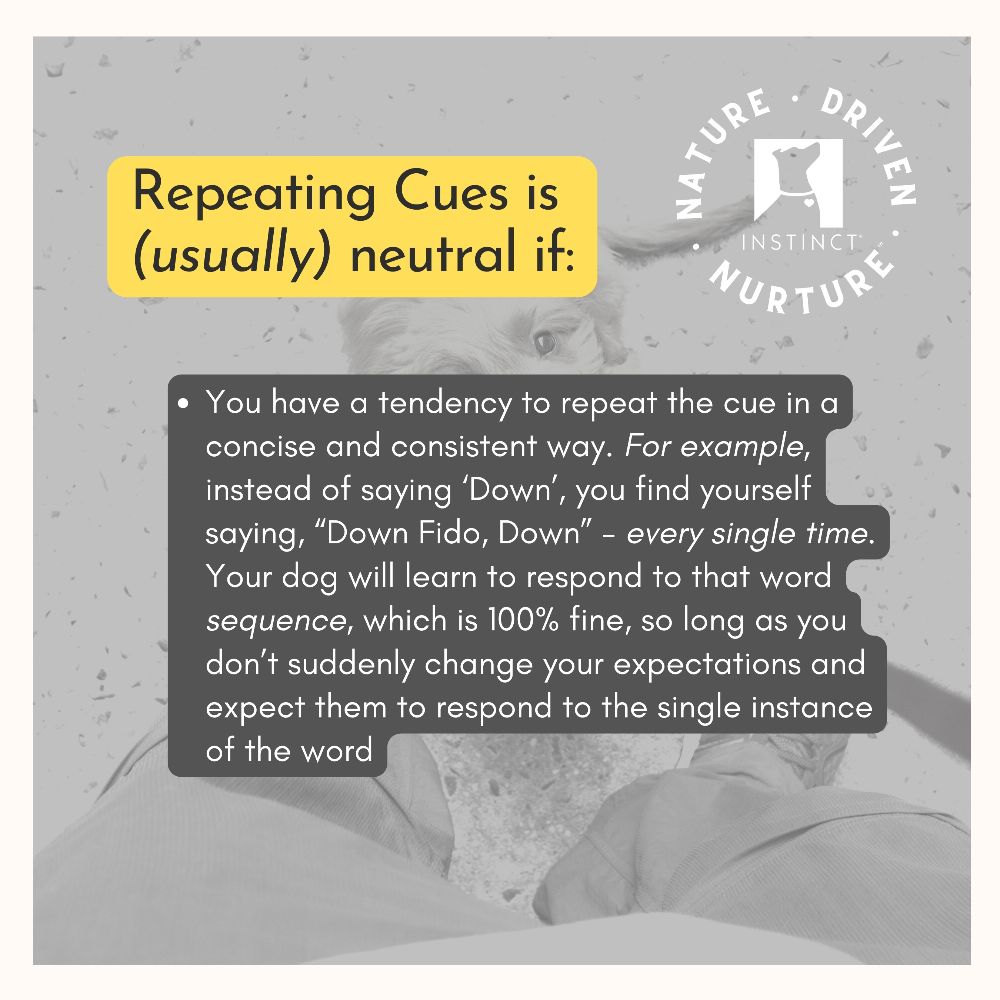
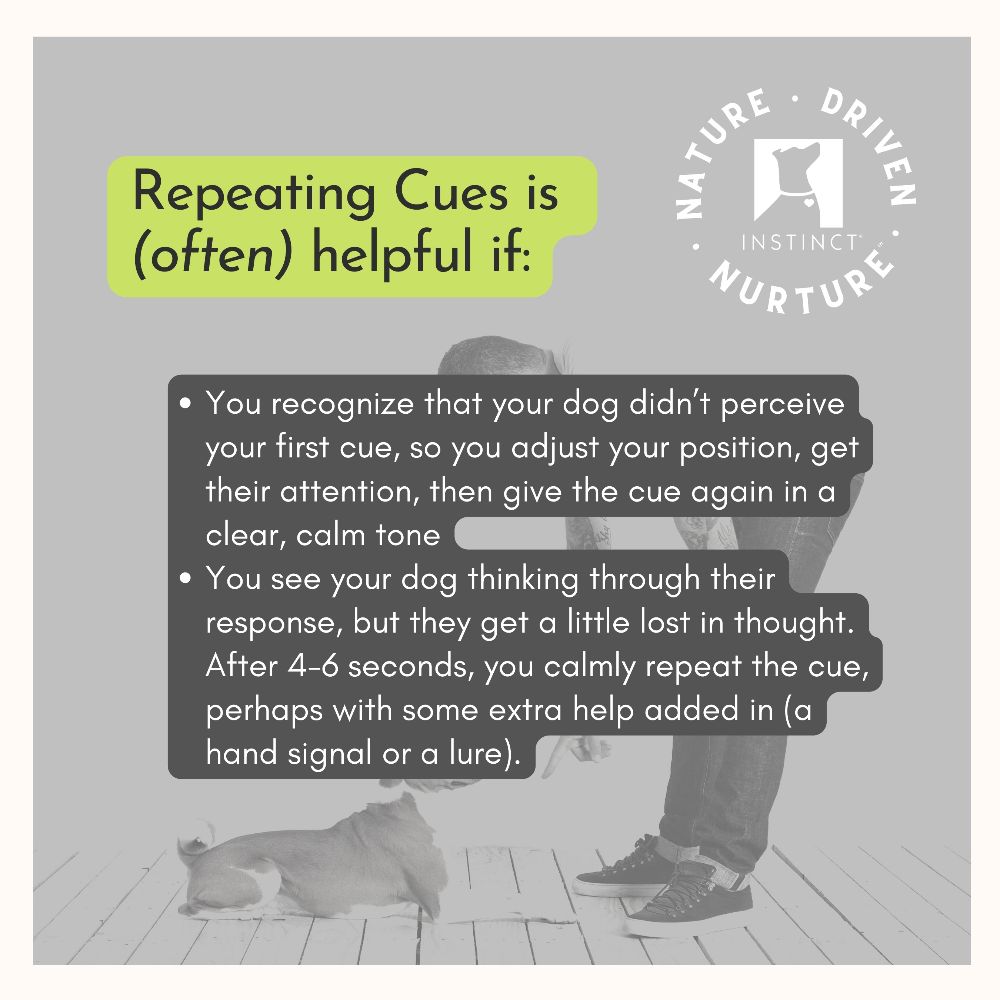
Say it Kindly & Thoughtfully
When we consider the range of harmful, neutral, and helpful examples above, it seems worthwhile to update the old “Say It Once” mantra to something like, “Say it Kindly & Thoughtfully” or, “Say It Whichever Way Helps Your Dog Succeed.” Not as catchy, but probably more accurate.
If repeating a cue adds stress, worry, or extra stimulation in a given situation, hold off. But if repeating that cue adds clarity? Repeat away. In other words – do whatever your dog needs from you in the moment, to help them succeed.
Do You Have Thoughts to Share on This Topic?
Hop on over to our Instagram to weigh in:
Say It Once IG post
NEED TRAINING OR BEHAVIOR SUPPORT?
Check out the resources below!

Check out Instinct’s award-winning podcast, Dogs Unknown (fka DogLab), hosted by Instinct Co-Founders Sarah Fraser (me!) and Brian Burton.

Join one of our free, live training & behavior seminars via Zoom!
Hosted by Instinct behavior consultants, these seminars include a 1 hr presentation plus live Q&A session. Open to all!
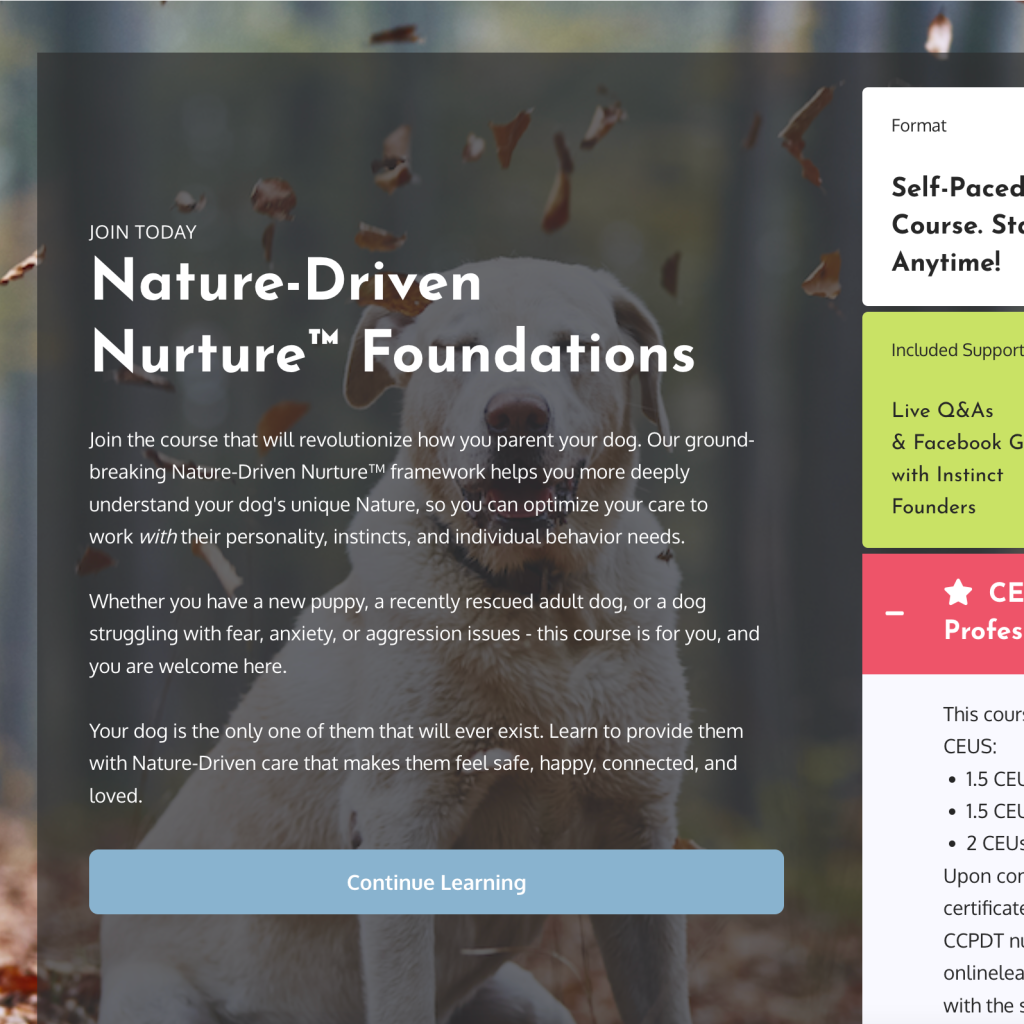
Sign up for the Nature-Driven Nurture Foundations course in our Online School. Learn our groundbreaking canine behavioral health framework that teaches you how to optimize your dog’s training & care based on their unique, individual Nature. This self-paced course includes:
- Access to private Alumni Facebook group
- Twice-monthly Zoom Q&As with Instinct co-founders
Or, contact your local Instinct for fully customized training & behavior support with certified, veterinarian-recommended trainers and behavior consultants.
